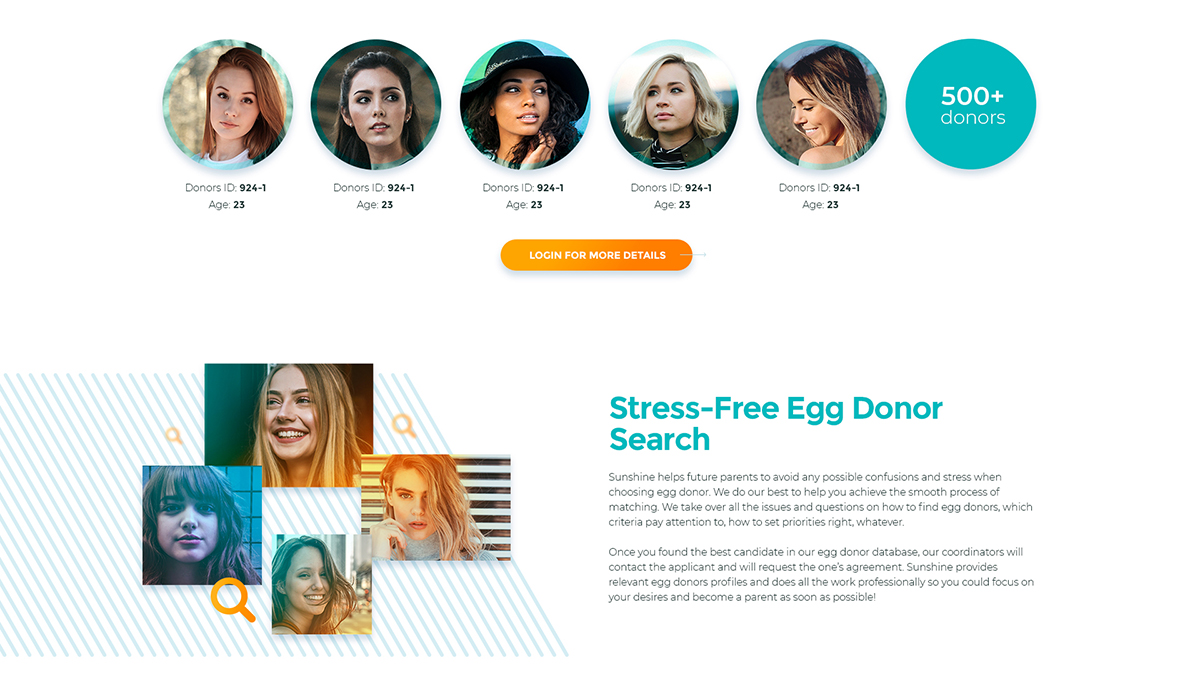Same Sex Parenting – Statistics, Studies, Gay Parenting Assistance Programs
Same-sex parenting also known as LGBT parenting is the term meaning a family with one or more children raised by gay, lesbian, or a transgender couple.
Fortunately, nowadays modern technologies make it easy for same-sex couples to have children not only via adoption and cooperation. With the up-to-date techniques of artificial insemination (IUI), IVF programs and surrogacy thousands of LGBT couples can become genetical parents of the new-born babies.
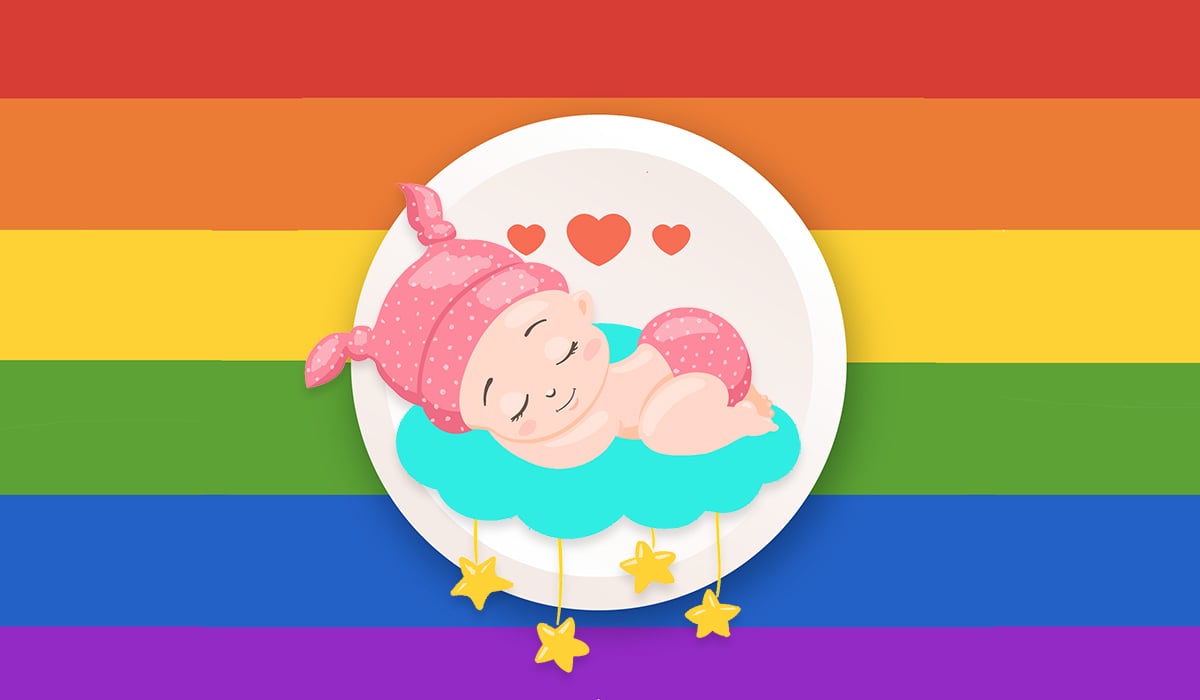
In this post, we will overview the same-sex parenting statistics, studies, and gay parenting assistance programs. Moreover, it will help you to understand how it works in different countries, what legal pitfalls the couples can meet and how to deal with them.
LGBT Parenting Ways
Generally, there are 2 main parenting ways for LGBT couples. Those are:
- Adoption
- Having a biological baby through
- Artificial insemination
- IVF and egg donation
- Surrogacy
- IVG, modern researches, technologies of the future
Let’s take a closer look at each of them to understand what options the couples have and how they work in different countries.
Same-Sex Parenting Statistics 2019
The table below shows the of the same-sex parenting statistics compared to opposite-sex parenting in the United States.
| Opposite-Sex Couples | Same-Sex Couples | |
|---|---|---|
| Families | 23 000 000 + | 97 000 + |
| Biological Children | 94% | 77% |
| Adopted Children | 6% | 23% |
The number of children living with same-sex parent increases with the growth of technologies and changes in the legislation.
Researches show that more than 3 000 0000 LGBT couples in the US want to adopt a baby. The highest density of adoption by LGBT couples is in California, Colorado, and New Jersey.
Other countries have different statistics which mostly depend on the legal status of same-sex couples. Let`s take a look at it in detail.
LGBT Adoption – Legal Status for Same-Sex Couples Around the World
The map shows the legal regulation of same-sex parenting via adoption in different countries. As you see from the image, at the moment it is entirely legal in 27 countries.
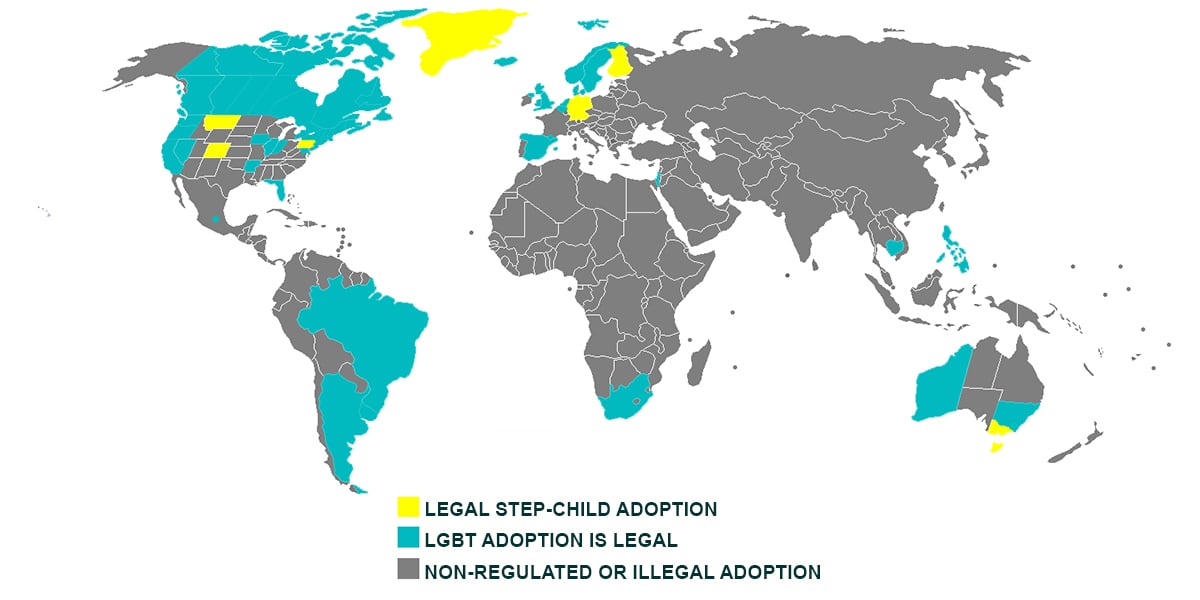
5 More states allow step-child adoption. It means that one of the partners is a biological parent of the child. Unfortunately, most countries in the world consider LGBT adoption illegal or do not have any regulations.
Biological Babies for LGBT Couples
Now when you know more about the adoption, its high time to review possible options for having a biological baby. We will talk about same-sex parenting through IVF, IUI, and surrogacy. Let’s start with the explanation of the fertilization process and proceed with the options for gay and lesbian couples.
Same-Sex Parenting Fertilization Explained
To conceive a child, you basically need three things.
- First thing you need is a germ cell (egg). It contains half of the nuclear genes set. Equally important, it includes mitochondria and all the other intracellular material needed for the new life.
- The second component is sperm, which brings the second half of the genes.
- The third element is the uterus where the fertilized egg will develop.
Fertilization assumes that the woman provides the first and third elements (uterus and egg). At the same time, a man shared half of the genes set via the sperm.
Lesbian Couples Parenting
Between 2007 and 2009, the first fourteen lesbian couples went through this procedure in Spain. According to the local laws, both women are genetical mothers and have equal rights for a baby.
At the present level of technology development, only lesbian couples can have a shared child. In this case, they use donor sperm. One woman provides the genetic material (egg), another carries the child. Thus, both women become mothers who equally participated in giving life to the baby. Moreover, both women can get pregnant at the same time.
Real Story about Simultaneous Pregnancy and Quads with Two Moms
There are multiple cases of lesbian couples IUI pregnancy. In some of the cases, both women from еру couple get pregnant simultaneously. Thus, women go through all pregnancy steps and give birth to kids of the same age.
For example, My Wife and I Are (Both) Pregnant article in the New York Magazine tells a story of Emily and Kate, who got pregnant from the same sperm donor through IVF. They have a lovely family now, and both are happy with the babies. Even though, they couldn’t hug sleeping for more than 6 months 🙂
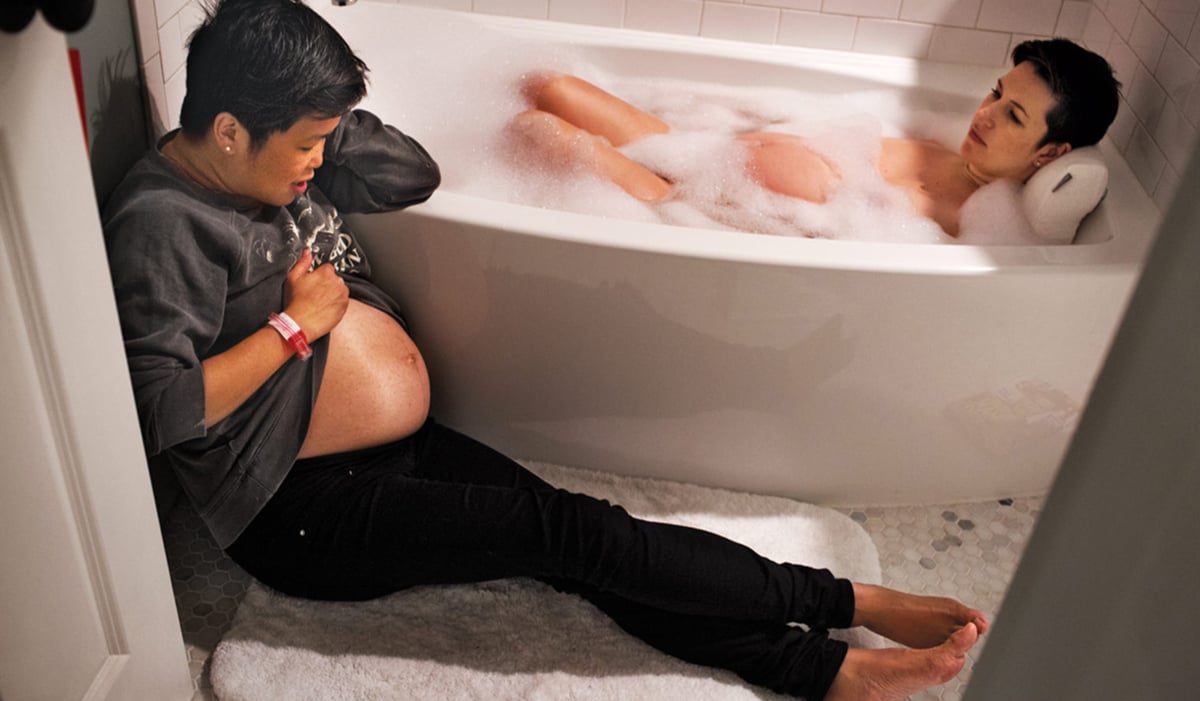
Another story tells about two mothers both pregnant with twins. Can you imagine that! 4 children in one family at a time. Well, this can actually happen if the doctors transfer several eggs during IVF to give women more chances of getting pregnant. You can find a video episode of this story below.
Gay Couples Parenting
As for gay couples, the process is more complicated. They need both a donor egg and a surrogate mother for carrying the child.
Experts do not recommend to use eggs from the surrogate mother. Thus, she will be genetically related to the kid and can change her opinion and dispute the right for the baby.
However, if you use donor eggs, this can be avoided. Donors are anonymous. And the surrogate simply carries the child who doesn’t have her genes. The baby will get half of the donor genes. That’s why it is highly essential to choose the best egg donor. Luckily, we at Sunshine have one of the largest egg donor databases.
You can take a look at the profiles and instantly choose one of them. Alternatively, you are welcome to drop us a line and our fertility expert will help you find the best person.
Gay Parenting Story from Simon and Graham
Simon and Graham Bernie-Edwards from the UK have been dreaming of creating a family and having a child since they met. They used the services of an IVF agency in Los Angeles.
Meg Stone became the surrogate mother of their children. According to Stone, when she first saw Simon and Graham’s profiles, she liked their smiles. That’s why she decided to help the couple.
Men could not decide who will become the biological father of their unborn child. However, fertility experts told that both partners could participate in the process and they decided to give it a try.
Both Simon and Graham fertilized half of the embryos. After the embryo transfer, the surrogate mother became pregnant with two babies. As a result, two kids Alexandra and Calder were born healthy and looked very much like their biological fathers. You can see their family photo below.
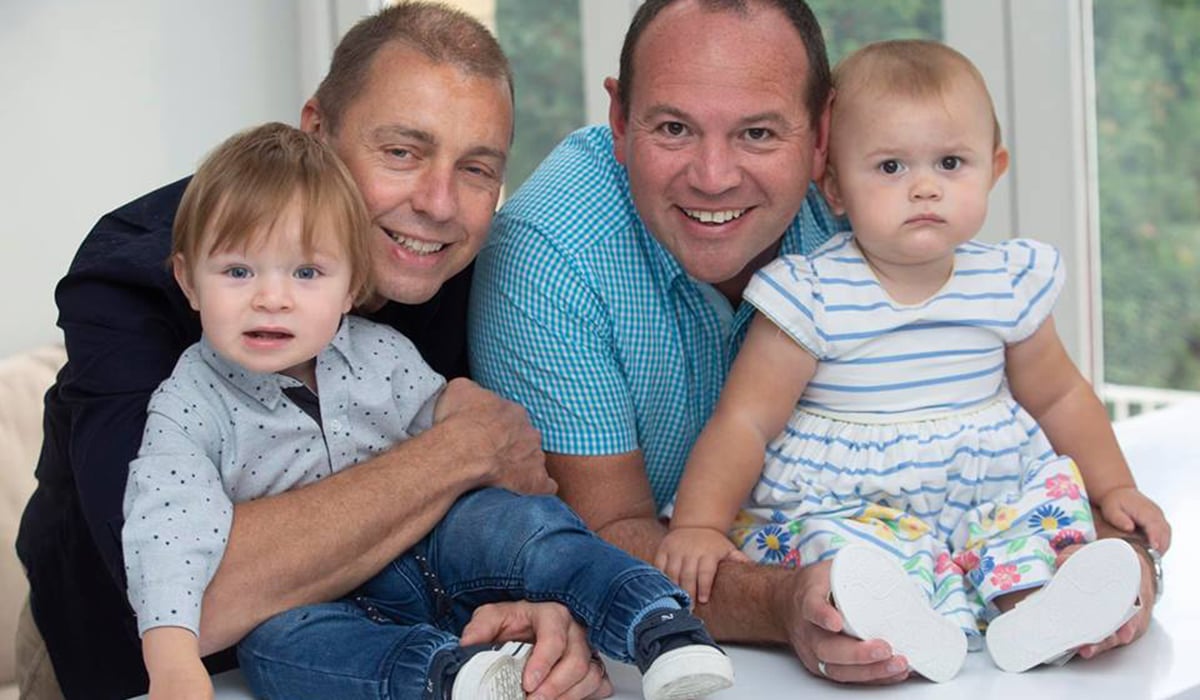
We at Sunshine have multiple success cases of gay couples parenting and know all the peculiarities of the process. If you want to know more details, make an appoint or find the nearest clinic – send us a request and we will do our best to help you create your dream family!
Can Same-Sex Parents Have a Baby with Shared Genes?
Admittedly, it would be awesome to have a child that shares the genes of both parents. That is, to merge the DNA of two spermatozoa or two eggs with the help if IVG (In Vitro Gametogenesis). Experiments on the creation of artificial eggs and Y chromosomes from stem cells are already being carried out – so far only with mice. More than that, scientists make attempts to create artificial uterus, making it possible to do without a woman.
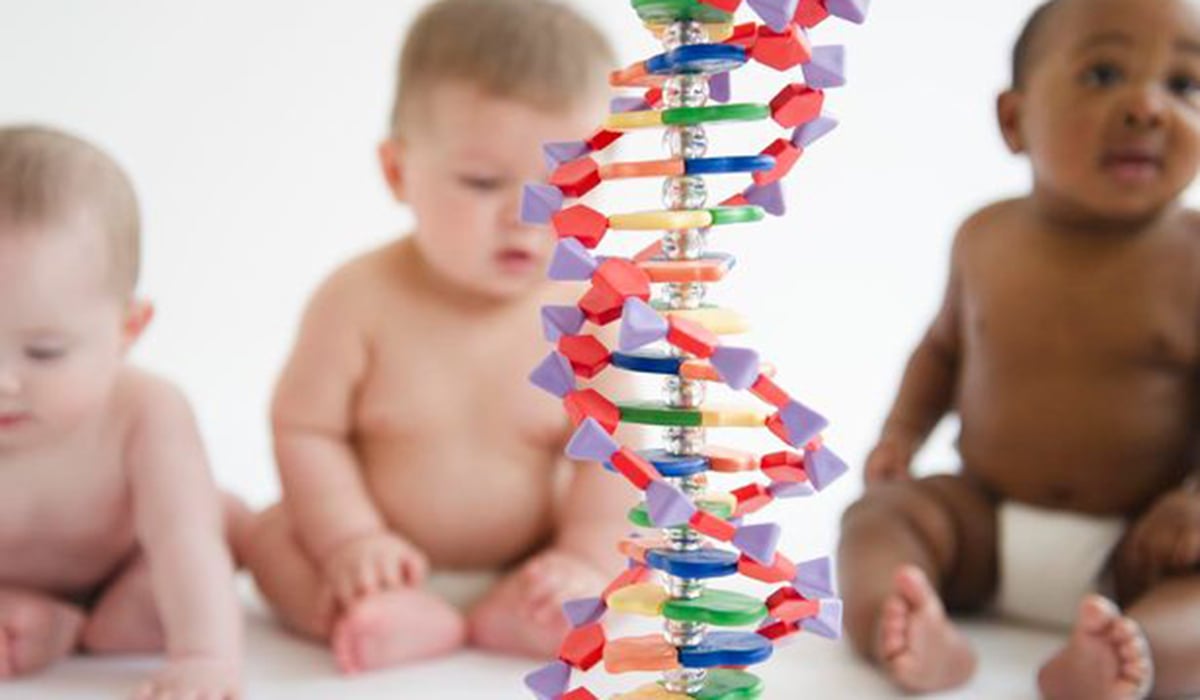
However, at this time this technology is still developing. The first babies, conceived with two eggs, were born in 2004 from two laboratory mice. Even though, the technique used for animals does not suit people at the moment and needs additional testing and research.
Small, but numerous steps in understanding methylation processes occur in science every month, and services to create a genetically shared child for same-sex couples will appear in reproductive clinics in the next twenty years. At least, it is already evident that there is nothing fundamentally impossible in this. Homosexual couples just require a little more advanced cellular technologies and time to create a shared child.
Same-Sex Parenting – Final Words
We hope that this article gave you some valuable information or even inspired you to start a family.
We hope that this article gave you some valuable information or even inspired you to start a family. If you are an LGBT couple or a single parent ready and willing to have a biological child, you can do that with our help. Call us, send an email or a facebook message, and let`s help your dream become a reality!
